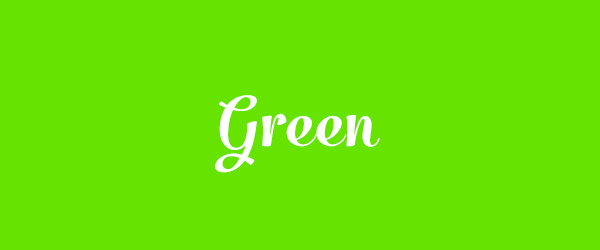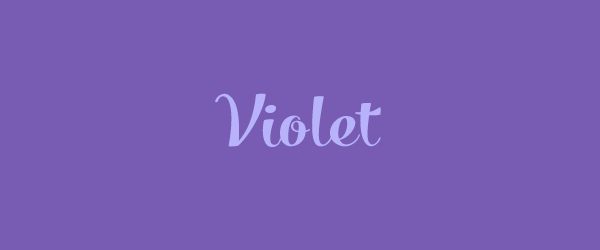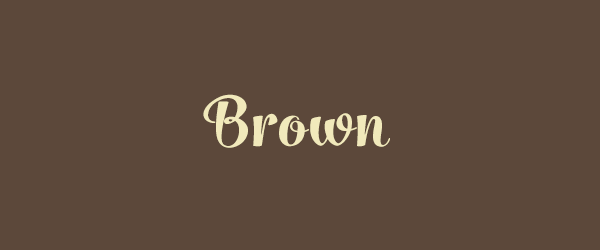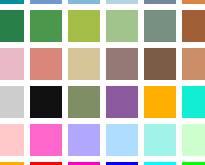Last Updated on February 24, 2024
To say that a logo is a powerful component of your business would be an understatement. If you’re able to integrate a clever company message to a unique and remarkable insignia, people will easily be attracted to find out who you are and take an interest in your products. This is why big companies invest a fortune just to make sure that they’re armed with a logo that their audience won’t easily forget and that their competitors will easily covet.
The creation of a logo doesn’t end on the design alone; it’s equally important that its colors and the whole look of the store reflect the values incorporated in the symbol. Brands can be recognizable by their colors alone, so it’s important that the message will not be misconstrued.
Many studies have been conducted in attempts to establish the connection between the consumers and the colors of the merchandise they buy, or the places they choose to buy products from. Some say that people buy products depending on what colors are available, while others strictly use their color preference as a compass. It also tickles their minds when colors are presented in fancier names.
If you’re looking into designing an appropriately-colored logo or simply want to know that your present colors signify, here are the 8 most commonly-used colors in businesses, their alternative names, and known brands with the said colors. We hope this information will lead you the right way, when making the important decision of choosing your colors.
Red

Red is one of the colors that quickly catches people’s attention. Red is a pigment that can be associated with a lot of things. Probably the most popular sentiment linked to red is love, which is why events that are supposedly channel warmth like Christmas and Valentine’s Day are dominated with its undertones. It also signifies passion and energy. The sight of this color and its corresponding shades easily makes people feel alive.
Red also has the capability to heighten hunger and be inviting at the same time. This is why it’s being widely-used for food establishments such as restaurants and diners. If you’re in the food and beverage business, you would be wise to adapt red or shades closest to it to entice your customers.
Red can also symbolize power, which is why it’s a common color to see being sported by both fictitious heroes and even villains. In the real world, however, those who wear red are seen as people who are in control and not afraid to let it show through their clothes.
Alternatives to Red: Carmine, Crimson, Ruby, Scarlet, and Vermilion.
Brands Popularized by This Color: Coca-Cola, Virgin, Target, LEGO, CNN, and Christian Louboutin.
Orange

A naturally bright shade in any palette, orange is a color that’s easily liked by children because of its warmth. Since it has a fruit namesake, it’s also not difficult to associate it with food and beverage, making it another favorite by food companies and restaurant owners.
The color orange also symbolizes leisure and playfulness. Although it’s not aggressive as red, it has the same stimulating effect to the human brain. Orange also symbolizes vigor and endurance which makes orange-colored brands ideal for sports-related brands and active hobbies.
If, for instance, you’re running a restaurant and you wish to cater to kids and to the young at heart, you can enlist orange in your interior palette along with red and yellow. Just make sure that you strike a balance with the hues and tints so that your colors don’t come off as an eyesore.
Alternatives to Orange: Apricot, Carrot, Peach, Persimmon, and Tangerine.
Brands Popularized by This Color: Nickelodeon, Fanta, Blogger, and Gulf.
Yellow

Yellow is believed to be the color of hope, although it’s also identified with optimism and youthfulness. Since many of us were taught that it’s the color of the Sun, we find no trouble associating it with bright days which help us feel automatically happy.
Just like red and orange, yellow is a color related to food. While it doesn’t have a namesake of its own, it compensates by being the color of many kinds of food whether it’s fruits, vegetables, or a cooked dish (think macaroni and cheese).
Yellow is also considered to improve memory and focus, thus the color of certain pencils, legal pads, and other school and office supplies. If you want to sell these kinds of merchandise, yellow would be an ideal color of the product itself or the packaging at least.
Alternatives to Yellow: Canary, Citrine, Golden Rod, Lemon, and Mustard.
Brands Popularized by This Color: Crayola, McDonald’s, National Geographic, Post-it, and Subway.
Green

Widely identified as the color of life, green favored by those who want to inspire health and growth. By sporting the color green, you too can echo your passion for the environment and healthy living.
Green is a common color found in hospitals, as light shades of it can inspire life. On the other hand, it’s also the color of money so it’s easy to associate green to wealth, especially when it’s partnered with gold.
If you want your business to resonate friendliness to nature, you can incorporate green to your logo and certain products. Green is also utilized by medicine manufacturers, as well as financial institutions such as banks.
Alternatives to Green: Asparagus, Forest Green, Lime Green, Sea Green, and Olive Green.
Brands Popularized by This Color: Animal Planet, Android, Heineken, Land Rover, and Starbucks.
Blue

A pervasive color these days, blue is often seen as the most popular color choice for social networking sites. This is because blue signify relaxation and communication, effects that are often achieved when through socializing online. It is also the color of trust and this encourages people to share virtually everything in their social media accounts.
It’s also common knowledge that since seas and clear skies are often blue, the color is easily related to rest making it an easy choice for those who wish to evoke loosening up.
Alternatives to Blue: Azure, Cerulean, Prussian, Turquoise, Teal.
Brands Popularized by This Color: Dell, Facebook, Intel, Tumblr, and Twitter.
Violet

Violet often reflects luxury that’s why many products use it to make the consumer feel as if what they’re buying is indeed lavish. However, loads of violet shades can come off as tacky, so business owners who want to use this color need to exercise precaution.
Violet can also be associated with intelligence, independence, and mystery. Since not many natural things are of this color, it communicates ambiguity and excitement.
Alternatives to Violet: Amethyst, Lavender, Lilac, Plum, and Purple.
Brands Popularized by This Color: Cadbury, Hallmark, Crown Royal, Welch’s, and Yahoo!
Pink

The signature color of everything feminine, pink is often found in stores meant for women. This doesn’t mean though that this color is exclusive to the ladies as more experimental men have been pairing subtle shades of pink with gray and navy when donning corporate regalia.
Pink communicates romance and tenderness so it’s often tagged with vulnerability. On the other hand, brighter shades of pink are considered powerful and exciting especially when mixed with other vivid shades like orange, red, and yellow.
Alternatives to Pink: Carnation, Cerise, Fuchsia, Mauve, and Salmon.
Brands Popularized by This Color: Barbie, Dunkin’ Donuts, Eukanuba, T-Mobile, and Breast Cancer Awareness Campaigns.
Brown

The color of the earth signifies reliability, stability, and humility. A lot of people associate brown with skin tone, making it easier to relate with people who wear the color. It’s as natural as green since they’re seen together in many living things, such as plants and trees. Brown is also the color food, making it easily likable.
Brown signifies prudence as the base color and its shades don’t manifest fanfare and aren’t necessarily attention-grabbing. It’s also a classic color when it comes to clothing and other fashion pieces, because it basically looks good on any kind of textile.
Alternatives to Brown: Bronze, Chestnut, Ecru, Mahogany, and Taupe.
Brands Popularized by This Color: The Coffee Bean and Tea Leaf, Hershey’s, M&Ms, Louis Vuitton, and UPS.
While this is a rather comprehensive presentation of colors and the significance they convey, you also need to keep in mind that there are people who tend to deviate from these interpretations. Because of this, you need to keep an open mind when deciding whether to offer a certain product in a specific color or to simply stick to the conventions.
Bonus tip: Rainbow colors are also becoming a trend, since they signify inclusivity and equality. Think Google, Polaroid, and NBC.

